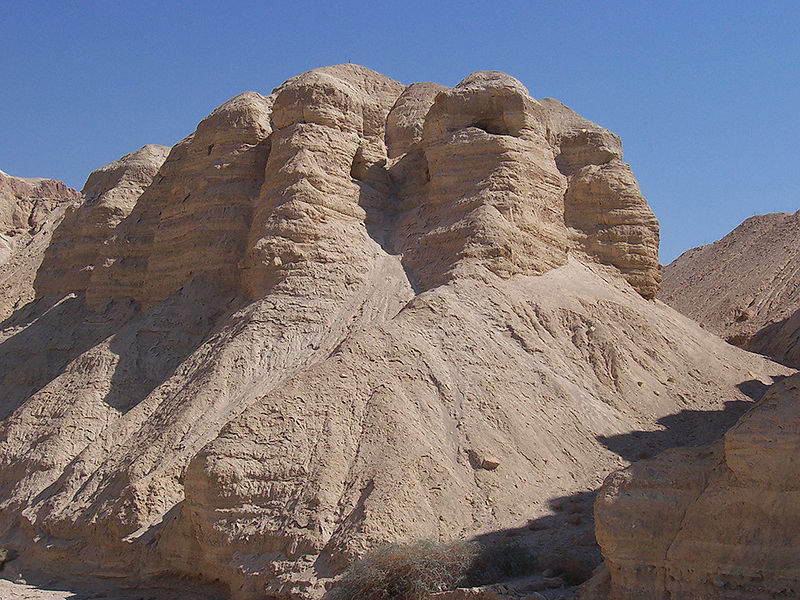Qumran Cave IV, Exterior

Qumran Caves are a series of caves, some natural, some artificial, found around the archaeological site of Qumran in the Judean Dessert in the West Bank. It is in a number of these caves that the Dead Sea Scrolls were discovered.
The limestone cliffs above Qumran contain numerous caves that have been used over the millennia: the first traces of occupation are from the Chalcolithics period then onward to the Arab period. The artificial caves relate to the period of the settlement at Qumran and were cut into the marl bluffs of the terrace on which Qumran sits.
In all there are ten marl cut caves in the near vicinity of Qumran: an oval cave in the west and two caves to the north in a separate ravine.
Their location necessitates a direct connection with the Qumran settlement. The three caves at the end of the esplanade could only be accessed via the settlement. These caves are thought to have been cut for storage and habitation.
Marl is a soft stone and makes excavation relatively easy, but as seen with other caves they haven’t survived well.
What do you want to know?
Ask our AI widget and get answers from this website